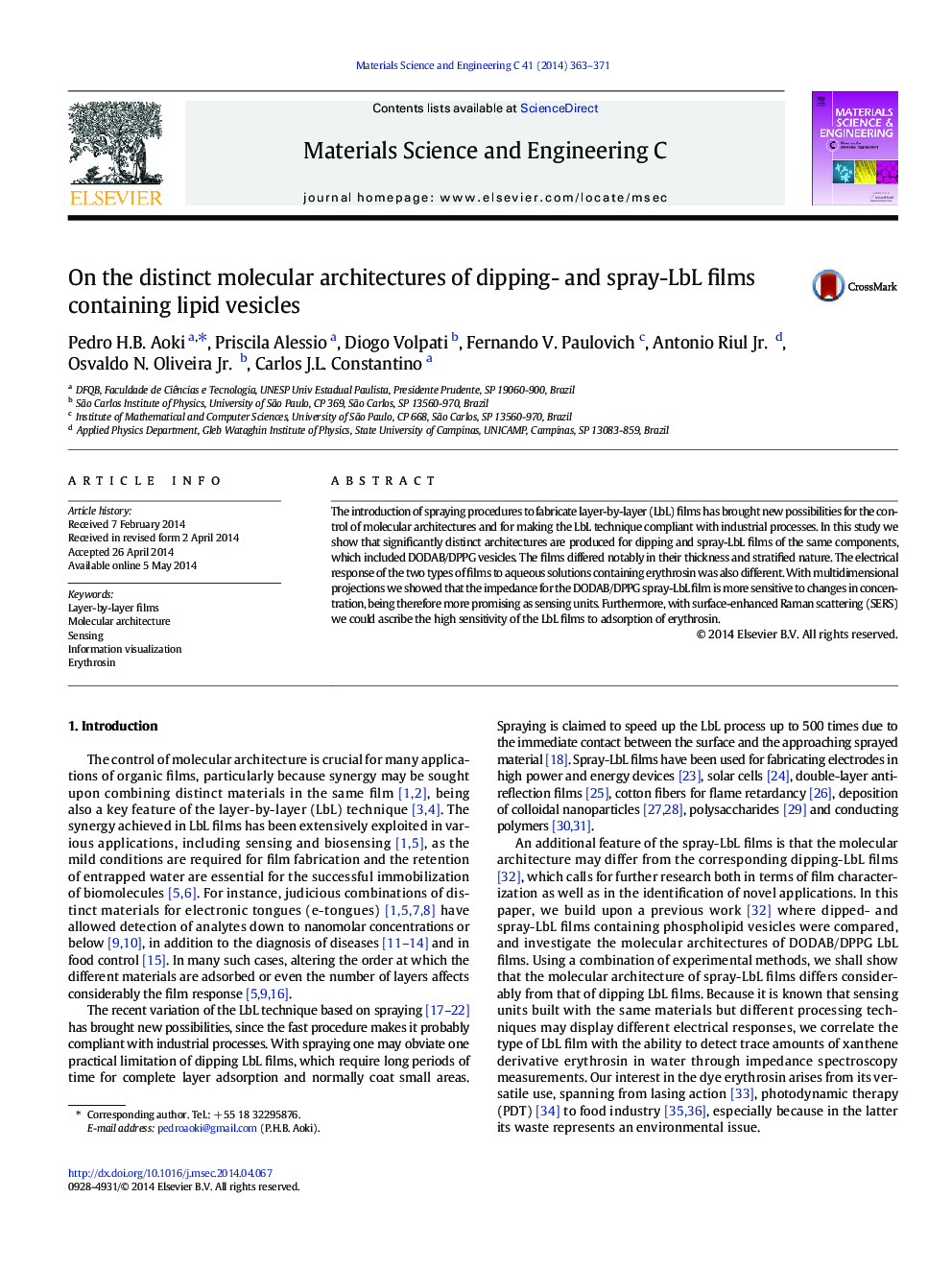| Article ID | Journal | Published Year | Pages | File Type |
|---|---|---|---|---|
| 1428747 | Materials Science and Engineering: C | 2014 | 9 Pages |
•DODAB and DPPG lipid vesicles were immobilized using the spray-LbL technique.•Vesicle integrity was kept despite the pressure induced by spray deposition.•Sensing units with spray-LbL films of DODAB/DPPG applied in e-tongue experiments.•Highly diluted solutions of xanthene were detected.
The introduction of spraying procedures to fabricate layer-by-layer (LbL) films has brought new possibilities for the control of molecular architectures and for making the LbL technique compliant with industrial processes. In this study we show that significantly distinct architectures are produced for dipping and spray-LbL films of the same components, which included DODAB/DPPG vesicles. The films differed notably in their thickness and stratified nature. The electrical response of the two types of films to aqueous solutions containing erythrosin was also different. With multidimensional projections we showed that the impedance for the DODAB/DPPG spray-LbL film is more sensitive to changes in concentration, being therefore more promising as sensing units. Furthermore, with surface-enhanced Raman scattering (SERS) we could ascribe the high sensitivity of the LbL films to adsorption of erythrosin.
Graphical abstractFigure optionsDownload full-size imageDownload as PowerPoint slide
